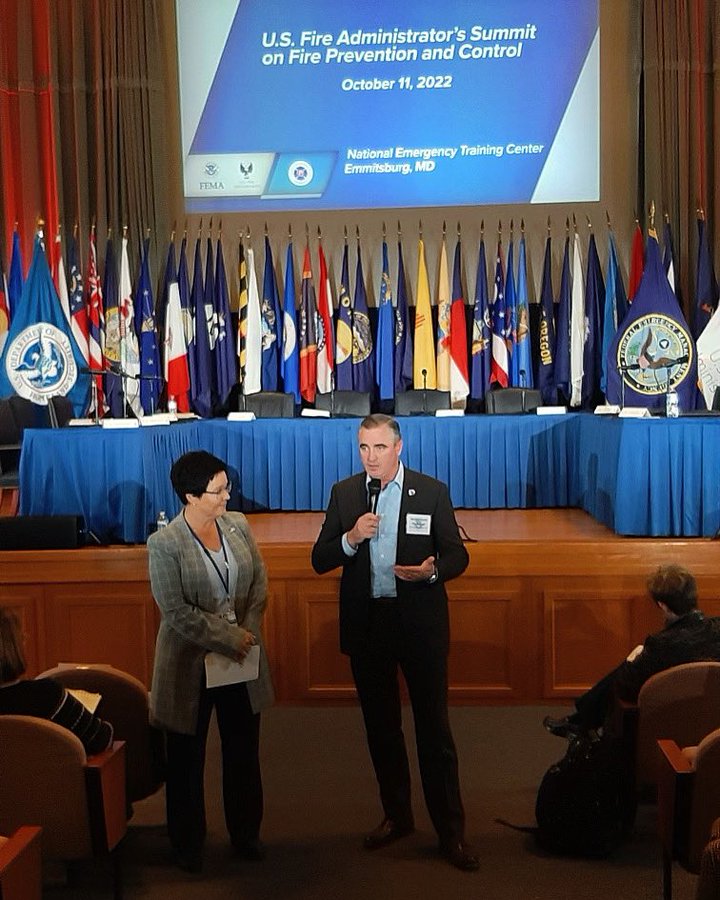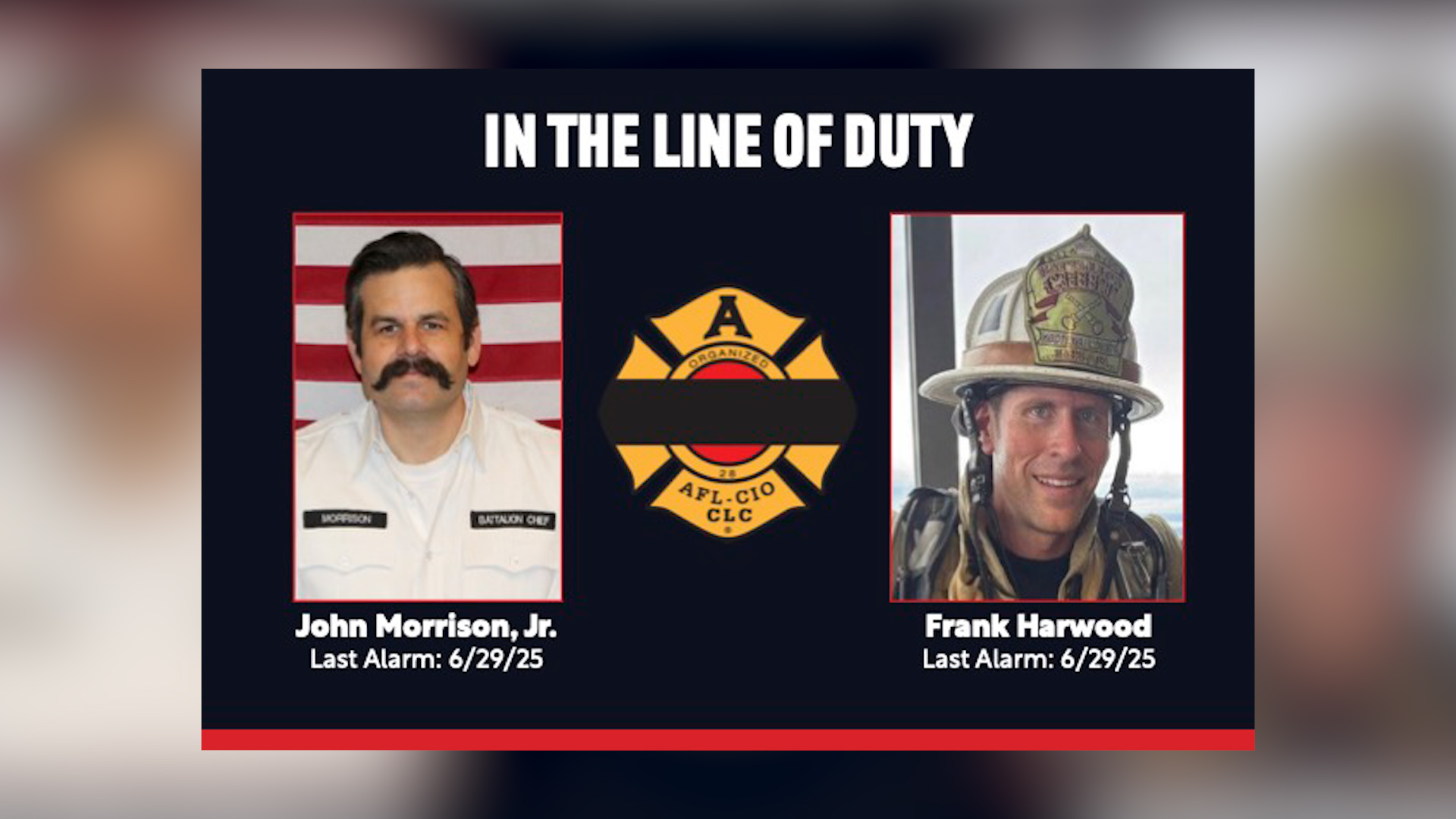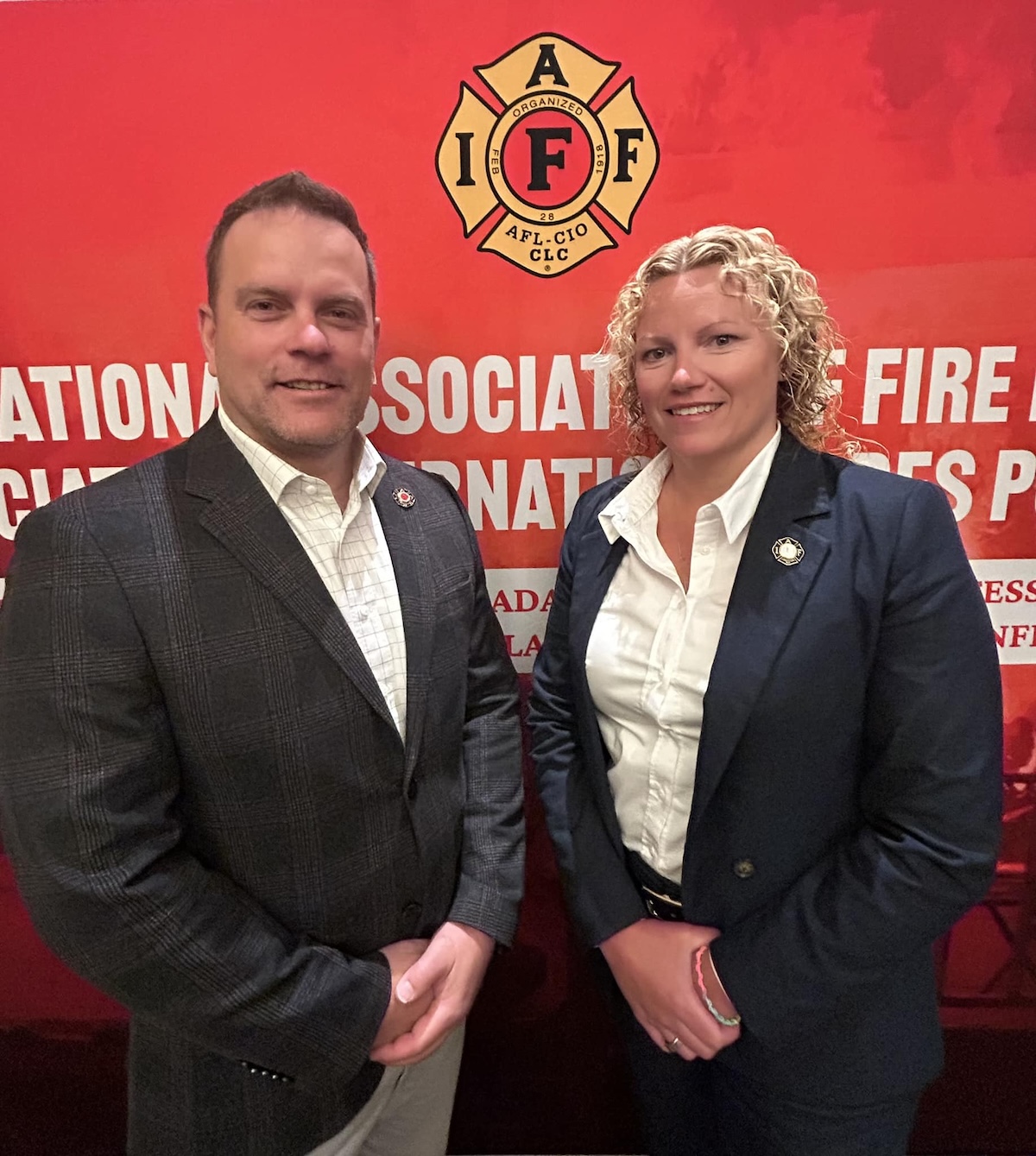
IAFF General President Edward Kelly, Chief of Field Services Pat Morrison and former Director of Health and Safety Operational Services Rick Swan served as subject matter experts for the U.S. Fire Administrator’s (USFA) Summit on Fire Prevention and Control at the National Emergency Training Center in Emmitsburg, Maryland. The USFA hosted the event – the first of its kind in 75 years – to call attention to the most critical issues facing fire and emergency medical services professionals.
In her opening remarks, U.S. Fire Administrator (and former IAFF senior executive) Dr. Lori Moore-Merrell identified cancer and other health conditions, the prevalence of deadly fires, fighting fires in the urban interface, and recruitment and retention as some of the most pressing challenges facing the fire service.
Moore-Merrell was also proud to welcome special guest President Joe Biden to the summit. Speaking virtually, President Biden voiced his continued support and readiness to assist fire fighters.
He called special attention to his push to pass the Federal Firefighters Fairness Act, which he said “will help federal fire fighters and their families access critical worker compensation resources. It is my hope that the final bill will also include a presumption for several types of cancer.”
Kelly had been part of a discussion earlier in the day on developing a national strategy to address cancer. “Early detection is key, so it is critical that we, as a nation, invest in research, promote health screenings for fire fighters and retirees, and implement protocols to eliminate our exposure to carcinogens like PFAS chemicals,” he said.
Leading fire fighter health researchers Dr. Kenneth Fent with the National Institute for Occupational Safety and Health (and the team lead for the National Fire Fighter Registry), Dr. Jeff Burgess with the University of Arizona’s Mel and Enid Zuckerman College of Public Health, and Dr. Sara Janke with the Center for Fire, Rescue and EMS Health Research spoke about recent strides in fire fighter cancer research.
All of them said more data needs to be collected to develop more effective cancer mitigation strategies. Burgess said that data collection is already underway through the Fire Fighter Cancer Cohort Study (FFCCS), which began in 2016.
The FFCCS is currently following 3,000 fire fighters and will eventually expand to 10,000 fire fighters, with the goal of determining how exposures lead to cancer and to identify mitigation strategies.
Similarly, the National Fire Fighter Registry, which is set to launch in the coming weeks at nfr.cdc.gov, also seeks data to determine the prevalence of rare forms of cancer in fire fighters, learn how cancer risk changes with extended toxic exposures, and further explore the link between firefighting and caner.
Morrison, the IAFF chief of field services, spoke on another critical fire fighter issue, behavioral health. He said the IAFF has found peer support counseling to be very effective for processing repeated on-the-job exposure to trauma and preventing suicide.
“Sometimes peer support is not enough, and our members need assistance from clinicians, but finding clinicians who truly understand what we do is not easy,” said Morrison. “The IAFF has worked to develop training for them so they can have that understanding. If our members feel understood, especially in the first treatment session, they are more likely to keep coming back for treatment.”
Morrison also identified other areas that need more attention, including how to better encourage fire fighters who are aware of behavioral health issues to then make positive changes and get treatment, if needed.
Also discussed at length was the rapid increase of wildland fires in the urban interface. In the past, wildland fires were mostly isolated to the southwestern part of the United States. But due to climate change and other factors, the wildland urban interface has grown at a rate of two million acres per year.
Mitigation strategies (adhering to fire-resistant building codes, reducing fuels like dry vegetation, better community planning, etc.) are helping; however, now that wildland fires can and do occur all over the country, there is an urgent call to train structural fire fighters to operate safely in the urban interface environment.
Swan, the retired IAFF director of health and safety operational services, explained that only about 25,000 of the nation’s fire fighters focus solely on wildland fires, and that’s not enough to address this growing problem.
Swan worked to develop the IAFF’s Wildland Urban Interface class, which is now available to IAFF members.
“Our trainers go on site to municipal fire departments and use their apparatus and equipment to teach proven strategies to combat wildland fires,” said Swan. “All fire fighters need this training because now the question is not if they will need to fight these fires, but when.”
Watch the livestream of the summit here.



